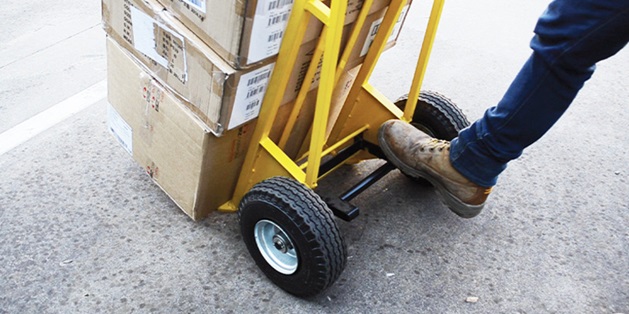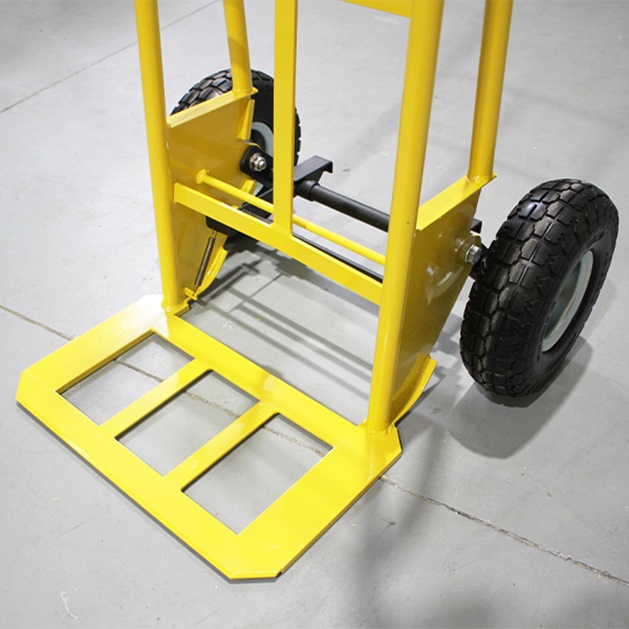In the world of industrial environments, especially within the confines of vast warehouses where the storage and transportation of goods occur on a large scale, meticulous organization is the keystone of operational efficiency and employee safety. In this age of technological advancements, where innovative tools and machinery are continuously emerging, one might assume that the old-school, manually operated trolley has been rendered obsolete.
However, quite the contrary is true. The simple yet incredibly effective hand trolley remains a stalwart in numerous industries, proving its worth in a wide range of applications, from manufacturing and storage facilities to bustling airports, fast-paced hospitality environments, well-organized supermarkets, and even the demanding healthcare sector.
What Makes a Good Trolley?

Amidst the plethora of options available, it is imperative to understand the key attributes that make a hand trolley NZ an invaluable asset. The ideal trolley should strike a harmonious balance between being lightweight for ease of use and transportation while maintaining sturdiness and durability. Furthermore, it should exhibit exceptional maneuverability. In the pursuit of acquiring the perfect trolley, consider these essential aspects.
Diverse Trolley Types:
While the fundamental elements of a hand trolley—a platform, handles, and wheels—remain consistent, there are subtle differences in their design and construction to cater to specific purposes. Therefore, it is essential to contemplate the various types of trolleys available and select the one that aligns with your precise needs.
- General-Purpose Trolleys: If your work involves handling loads of varying sizes and heights, and your trolley needs to adapt to a range of tasks, then general-purpose hand trolleys are an excellent choice. They are versatile and can accommodate a variety of handling needs and load configurations.
- Platform Trolleys: For heavier loads, a sturdier platform trolley is the better-suited option. These trolleys are designed to handle substantial weight with ease.
- Folding Trolleys: In situations where space is a premium and you need a trolley that can adapt to different locations with varying spaciousness, folding trolleys offer a flexible solution. They are ideal for storage in compact spaces when not in use.
- Stair Climbing Trolleys: If your operations involve navigating through multi-level facilities with loads, a stair climbing trolley is the answer. These trolleys are equipped with specialized stair climber wheels that make ascending and descending stairs a breeze.
- Appliance Trolleys: Designed specifically for moving bulky appliances such as washing machines, dishwashers, and refrigerators, these trolleys come with straps and clamps to secure the load. They are often equipped with puncture-proof wheels to handle the weight and protect delicate floors.
Load Capacity and Height:
Understanding the load capacity of a trolley is paramount. Trolleys come in different load-bearing capacities, and it is crucial to select one that aligns with the weight of the loads you intend to transport. Choosing a trolley with inadequate load capacity can pose risks to both your safety and the integrity of the goods being transported. When shopping online, the load capacity of each trolley model is typically clearly indicated.
Additionally, consider the height of the loads you will be handling. Loads that are too tall can obstruct the proper use of the trolley’s handles, increasing the risk of accidents. The height of the trolley should be conducive to efficient maneuvering and load stability.
Selecting the Right Material

The material of the trolley plays a significant role in its durability and longevity. Two common material options for trolleys are stainless steel and aluminium.
- Stainless Steel: Stainless steel trolleys are known for their robustness and weight, making them suitable for heavy-duty applications. They are exceptionally sturdy and have a reputation for durability. However, they are heavier compared to aluminium trolleys. Stainless steel trolleys are also relatively more expensive.
- Aluminum: Aluminum trolleys, on the other hand, are lightweight and easy to handle. They offer excellent resistance to rust and corrosion, making them a dependable choice. While aluminium trolleys may not match the heavyweight capacity of stainless steel counterparts, they are perfect for various applications. They are often more affordable than stainless steel trolleys.
Proper Maintenance
To ensure the longevity of your chosen trolley, a modicum of maintenance is required. Regularly wipe the trolley clean and keep it dry before and after each use. This practice applies to both aluminium and stainless steel trolleys, enhancing their resistance to rust and corrosion.
Conclusion
In conclusion, while the world of industrial environments is witnessing an influx of modern tools and equipment, the humble hand trolley retains its significance. By considering the type, load capacity, material, and maintenance of the trolley, you can make an informed decision and choose the perfect trolley to streamline your operations and enhance efficiency, all while ensuring the safety of your valuable assets and, most importantly, your workforce.


